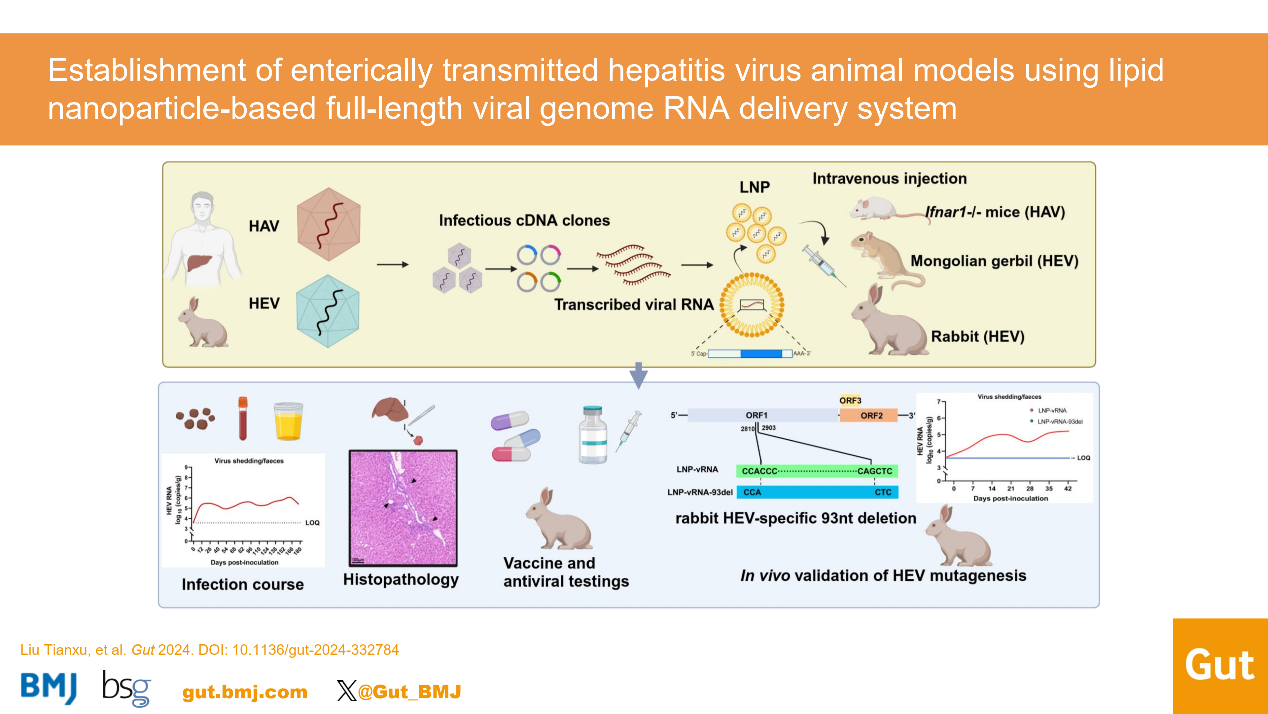The rapid establishment of a viral infection animal model is valuable for pathogenesis studies and testing of vaccines and therapeutic agents. Common approaches may require inoculation of experimental animals with clinical sample-or cell culture-derived live virus stocks using a reverse genetic system (RGS). In particular, the generation of RGS greatly contributes to the preservation, rapid propagation, and characterisation of RNA viruses. However, a certain number of viruses rarely infect or replicate in commonly used cell lines, such as the two representative enterically transmitted hepatitis viruses, HAV and HEV, making it difficult to rescue sufficient live wild-type viruses for subsequent infection.
Wild-type HAV and HEV have long been extremely difficult to culture and only limited cell-adapted strains can be used for in vitro culturing. The viral stocks used to infect animals are usually prepared directly from faeces or liver homogenates collected from infected animals or humans. Using RGS, either after many days or weeks in culture to collect adequate titres of infectious viral stocks or direct injection of in vitro transcribed (IVT) full-length viral genomic RNA (vRNA) into the liver is required to establish animal infection. These procedures are either time-consuming or require invasive operations which impede the efficiency, uniformity, and quality control of the establishment of a tractable animal model. Therefore, a culture-free, reliable, and rapid approach to establish in vivo infections is crucially required.
Recently, Dr. Lin Wang and Dr. Tianxu Liu from Peking University, Beijing, China, in collaboration with Prof. Cheng-Feng Qin, has successfully established HAV and HEV infection in vivo by intravenous injection of LNP-encapsulated full-length viral RNAs. On intravenous injection of LNP-vRNA, stable viral shedding was detected in the faeces and infectious HAV or HEV was recovered from the livers or faeces of the inoculated animals (Ifnar−/− mice, rabbits or Mongolian gerbils). Liver damage was observed in LNP-vRNA (HAV)-injected mice and LNP-vRNA (HEV)-injected rabbits. Mongolian gerbils were also susceptible to LNP-vRNA (HEV) injections. Finally, the antiviral countermeasures and in vivo function of HEV genome deletions were validated in the LNP-vRNA-based animal model.
This study lays the foundation for rapid establishment of a tractable HAV and HEV infection animal model advancing preclinical study of clinical disease pathogenesis, drug testing and vaccine evaluation. The current study builds up a paradigm of LNPbased viral RNA genome delivery for in vivo infection model establishment. Such system greatly broadens the application of LNP-based delivery system.
Read the full article published in Gut (2024 Oct 1:gutjnl-2024-332784): DOI: 10.1136/gutjnl-2024-332784

